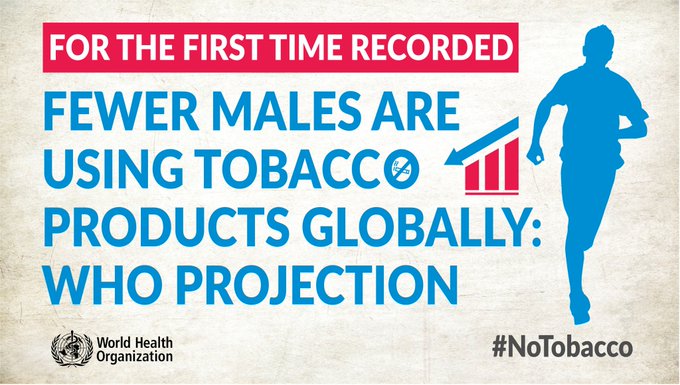UN health agency signals tobacco might be reaching burn-out among men

The World Health Organization projects that the number of males using tobacco is on the decline, indicating a powerful shift in the global tobacco epidemic.
18 December 2019
Two decades of increasing tobacco use around the world are set to go into reverse, UN health experts have predicted, after revealing data indicating that fewer men and boys are smoking than before.
“For the first time the number of tobacco users is declining worldwide”, Dr Ruediger Krech, Director of the Department of Health Promotion at the World Health Organization (WHO), told journalists on Wednesday in Geneva.
For the first time the number of tobacco users is declining worldwide - WHO's Dr Ruediger Krech
In 2018, there were slightly more than a billion males using tobacco around the world, “over 40 million more than in the year 2000,” he said. “But now for the first time, we are seeing declines in use, with WHO projecting that there will be at least two million fewer men using tobacco in 2020, and five million less by 2025.”
Describing the development as a “powerful shift in the global tobacco epidemic” in view of the fact that more than four in five smokers are male, Dr Krech explained that it mirrors “consistent reductions” by 100 million women since the turn of the century.
World still off-track to meet reduction targets
This progress proves that national tobacco control measures work, Dr Krech insisted, citing taxation and controlled smoking areas in public places, and other legislation that prevents children from being exposed to tobacco.
Showing that tobacco use can be reversed should also give Governments confidence that they can meet the global target of a 30 per cent reduction in tobacco use by 2025, the WHO official maintained.
Despite the positive trend, however, the world is not on track to meet this target, he insisted, noting also that more than eight million people die from tobacco use every year - approximately half of its users.
More than seven million of those deaths are from direct tobacco use while around 1.2 million fatalities are non-smokers exposed to second-hand smoke, WHO said.
In addition, most tobacco-related deaths occur in low and middle-income countries, areas that are targets of intensive tobacco industry interference and marketing, the UN agency insisted.
“We cannot be satisfied with a slow decline when over a billion people are still using tobacco,” Dr Krech said. “We must dramatically accelerate tobacco control measures to prevent current and future generations from tobacco use.’
By 2020, WHO projects there will be 10 million fewer tobacco users worldwide, male and female, compared to 2018, and another 27 million less by 2025 - a total of 1.299 billion.
According to WHO’s global report on trends in prevalence of tobacco use 2000-2025, 60 per cent of countries have seen declining tobacco use since 2010.
‘Turning point’: Tedros
Welcoming the development, WHO Director-General Tedros Adhanom Ghebreyesus described the reverse among men as a “turning point” in the fight against tobacco.
Crediting Governments for “being tougher” on the tobacco industry, the WHO chief committed WHO to continue working closely with countries “to maintain this downward trend”.
Reductions in global tobacco use demonstrate that when governments introduce and strengthen their comprehensive evidence-based actions, they can protect the well-being of their citizens and communities,” Dr Krech added.
Key Findings
- Children: Approximately 43 million children (aged 13-15) used tobacco in 2018 (14 million girls and 29 million boys).
- Women: The number of women using tobacco in 2018 was 244 million. By 2025, there should be 32 million fewer women tobacco users. Most gains are being made in low- and middle-income countries. Europe is the region making the slowest progress in reducing tobacco use among females.
- Asian trends: WHO’s South East Asian Region has the highest rates of tobacco use, of more than 45% of males and females aged 15 years and over, but the trend is projected to decline rapidly to similar levels seen in the European and Western Pacific regions of around 25% by 2025. The Western Pacific Region, including China, is projected to overtake South East Asia as the region with the highest average rate among men.
- Trends in the Americas: Fifteen countries in the Americas are on track to reach the 30 % tobacco use reduction target by 2030, making it the best performing of WHO’s six regions.




 on the decline
on the decline , indicating a powerful shift in the global tobacco epidemic: New WHO report
, indicating a powerful shift in the global tobacco epidemic: New WHO report 

No comments:
Post a Comment